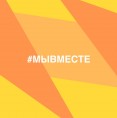- The exhibition «The Great Patriotic War. Beginning. Special Services in the defence of Leningrad» opened on Gorokhovaya
- The exhibition «Save Can't Destroy. The punctuation marks are set by the society»
- The exhibition “Posters at War” opened at the Danish Poster Museum
- New Arrivals: works by the artist Andrei Pashkevich
- New exhibits: cold weapons and coins of the 19th – early 20th centuries
- Opening of the exhibition «Please, enroll me as a volunteer...»
- Opening of the exhibition “The Flag of Russia over Saint-Petersburg”
- Opening of exhibition: “The Space. Dreams and politics”
- Главная страница
- -News
- -The exhibition «Save Can't Destroy. The punctuation marks are set by the society»
The exhibition «Save Can't Destroy. The punctuation marks are set by the society»
On August 18, 2021 an exhibition «Save Can't Destroy. The punctuation marks are set by the society» opened at the Museum of Political History.
The exhibition presents paintings, graphics and posters from the perestroika period and the 1990s from the collection of the Museum of Political History of Russia - works by Andrei Pashkevich, Vladislav Zhukov, Alexander and Svetlana Faldin, Vladimir Filippov, Savely Lapitsky, Vasily Vdovin. Central place at the exhibition took the work of Andrei Pashkevich (1945-2011) from the famous series «Political Ecology». Pashkevich graduated from Gerasimov Institute of Cinematography and worked at the Gorky Film Studio as a cameraman. But he became famous due to his artistic works. A cycle of paintings - political metaphors reflecting the chronicle of Russia's recent history, they were given to the museum by his wife, Belgian translator Gret Van Haelst.
Evgeny Artemov, the museum's general director, described how the museum lived in the late 1980s and early 1990s. «In the 1990s, artists in Saint-Petersburg were pouring out their attitude to what was happening in the country at spontaneous exhibitions. They were one-day posters that existed in a single copy, and such a collection of the author's untyped posters ended up in our collection. And today the museum gratefully accepts Andrei Pashkevich's works, which will take a worthy place both at the exhibition and in the collection of the museum», said Artemov. According to him, the works presented at the exhibition are united by the desire for a direct dialogue with the audience, through them passes the theme of choice. By comparing old and new idols, symbols of the passing era with signs of change, negative aspects of the past and contradictory realities of the present, artists give viewers an opportunity to make a choice - to preserve or destroy, to create or not to act, to forget or remember. The exhibition and collection of works by Andrei Pashkevich encourages us to think about it.
The Museum and Gret Van Haelst signed an agreement on the transfer of exhibits as a part of the opening ceremony. The artist's wife, who had been organizing Pashkevich's exhibitions in various Russian cities for ten years, said that it was important for her to determine the fate of Pashkevich's artistic heritage and she considered the museum is the best place for this.
Also at the opening of the exhibition there were: Natalia Bartosh, a candidate of philological sciences, head of the department of history, culture and arts of Novosibirsk state university; Alla Chayanova, a director of Plyoss state historical-architectural and art museum-reserve, and Svetlana Khodakovskaya, chief curator of the museum.
The exhibition is open until October 20 (Halls 12-13)
















